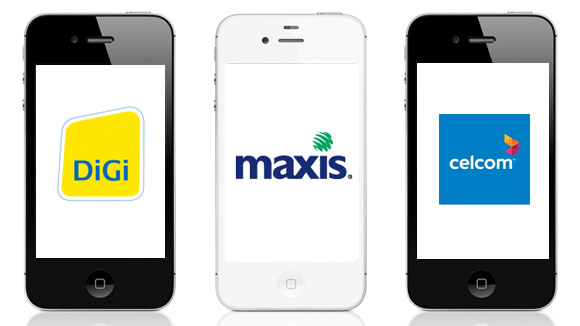UPDATE: iPhone 4S now available on Apple Store from RM2,199.
UPDATE 2: Since the iPhone 4S can be bought stand alone directly from Apple Store, we compared other alternative plans.
The iPhone 4S will be officially available in Malaysia this Friday with the 3 big boys – DiGi, Maxis & Celcom offering the device. This time around, the launch is more interesting as the iPhone 4S will be simultaneously available not only by the telcos but it also can be bought directly from Apple Store.
For cheaper ownership, the best way to go is getting the iPhone 4S through a telco. So what is the difference you might ask. Which gives better value or lower cost in the long run? Just like last year’s iPhone 4 DiGi vs Maxis comparison, we compared the latest offering of DiGi, Maxis & Celcom for easy reference.
Head after the break for full details
What’s in the plan?
Not all plans are equal. Although all 3 offers bundled usage within their plans for fixed amount, the offering and usage conditions can be different. Since iPhone 4S relies heavily on data for the full experience, most of us would look at the data offering first. While users can pick a data plan that suits their usage, you might need to find out if you have tendency to exceed your provided monthly data quota.
In the current offering, DiGi & Celcom doesn’t charge extra but your downloads can be throttled to very low speeds if you do so. Maxis in the other hand does not throttle your speed however excess data is charged at 5 sen per 10KB.
There are other things to look out for, such as whether your bundled calls, SMS and MMS can be use to contact other people from other networks. If you make a lot of calls to Celcom, Celcom’s plans are a big advantage as they offer up to 6000 minutes of bundled calls within their network.
[pp_gallery]
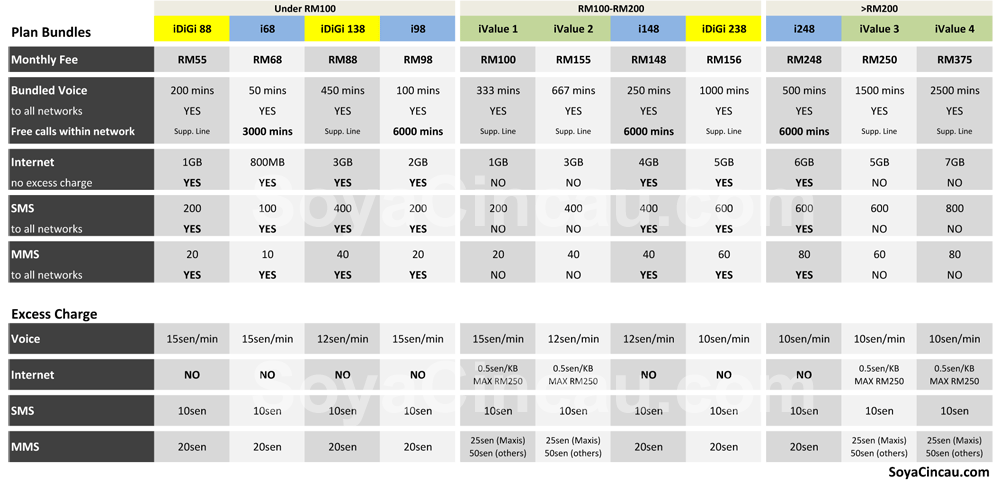
[/pp_gallery]
How much does it cost?
There’s a big difference in the way the telcos bundle the iPhone 4S. Maxis and Celcom offers the usual way of offering the iPhone 4S at a subsidised price while DiGi does it a little different. For DiGi’s contract, it subsidise RM200 from the phone price however the bulk of the subsidy actually goes into the plan. If you would have noticed, iDiGi 88 is offered at RM55/month (with auto-billing) but the value inside is supposedly worth RM88. So in a nutshell, it is a matter of paying less for the phone and standard monthly subscription or pay more for the phone upfront with cheaper monthly fees in the long run.
For the iPhone 4S 32GB on Maxis, it is currently free on iValue 4 with 24 months contract during the promo period until 15th January 2012. This is going for RM350 after the promo period.
Ownership Cost (24 months contract)
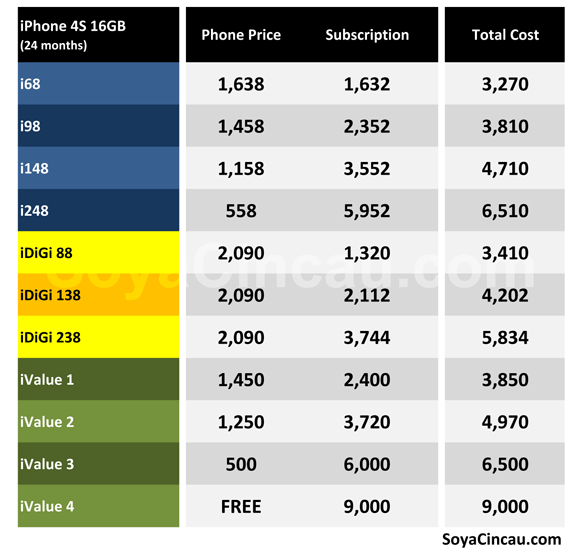
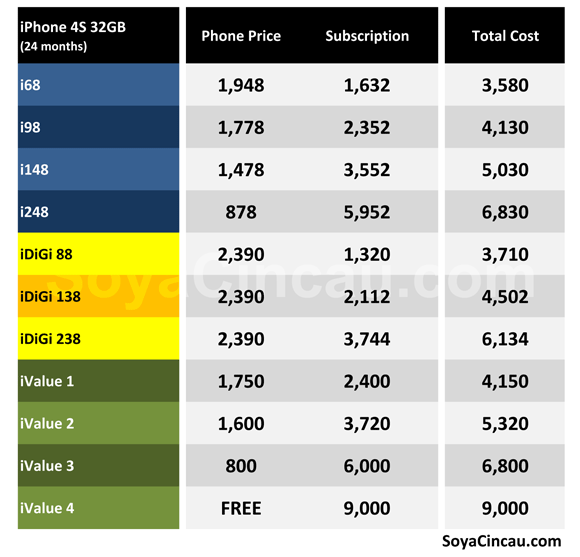
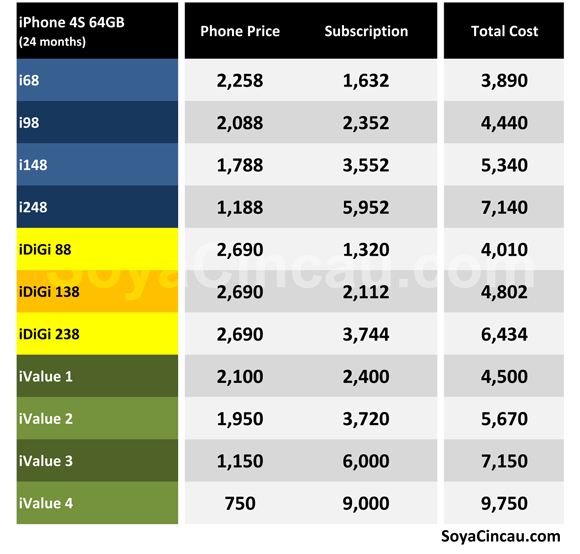
Ownership Cost (12 months contract)
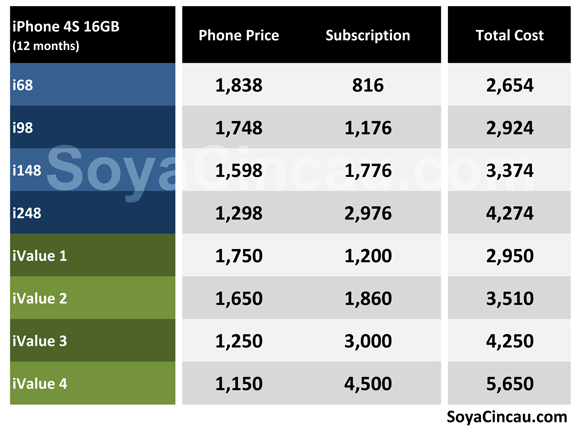
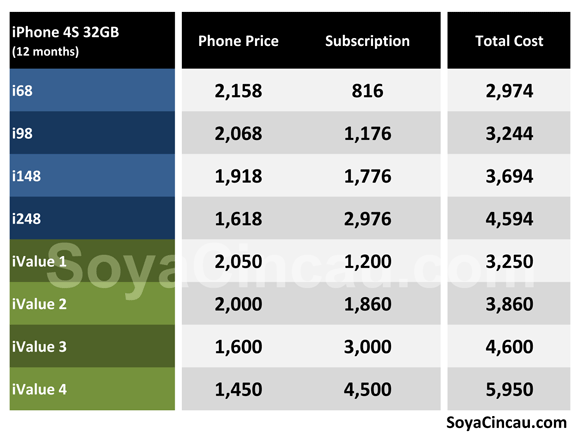
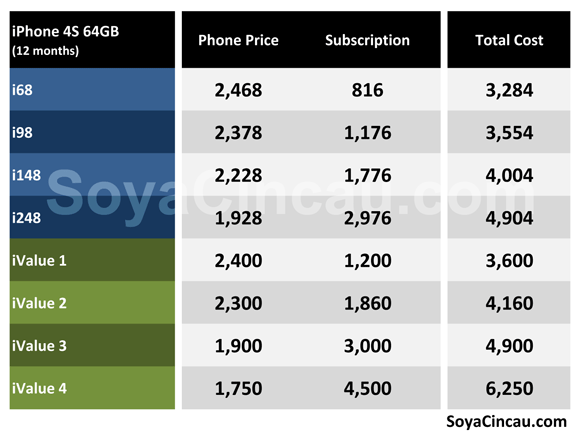
Other points to consider
As always, this comparison is strictly on pricing and cost of ownership alone for reference. Before jumping into a contract, you would also need to consider other things such as network coverage, performance, customer service & voice quality. All these are different on each network and it is hard to compare this as the situation differs depending on area.
The cost of ownership listed above is merely for reference and it is based on assumption that you don’t exceed the bundled voice call, SMS, MMS and Data. For better planning, we suggest studying your monthly bills to know how much you actually use each month. From there, you should roughly know which plan is more suitable and anticipate how much you would end up spending when you exceed the bundled minutes.
In terms of upfront payment, DiGi currently doesn’t require advance payment other than the price of the phone. For Maxis and Celcom, they do require some form of advance payment which varies depending on plan and contract option. The difference between Maxis and Celcom is that Maxis rebates back the payment across 5 months while Celcom repays back over 12 months period.
If you spot any mistakes, please do alert us and we will make the changes. And as always, do drop us your comments below.
Related Posts
iPhone 4S Camera compared with the rest
iPhone 4S Siri Review
iPhone 4S hardware specification comparison

